One of the compliments I most often hear regarding my church Sojourn’s communications ministry is our volunteer photography team. We’ll post many articles here in the future on the different ways we use photography as a testimony/documentary tool at Sojourn. To start, here is an overview Q&A between me and my lead deacon in charge of the Sojourn Servant Photography Corp, Chuck Heeke (follow Chuck on Twitter here, and follow the photography ministry on Twitter here).
Bobby: What are some of the different things the photo ministry has covered?
Chuck: We cover everything from the weekly services to special events at all of our Sojourn campuses. We have shot the Acts 29 church planting conference, Christmas events, portraits of new pastors, and the annual fall festival. We also cover concerts at The 930 including: Danielson, Seabird, Derek Webb & Sandra McCracken, Katie Herzig and Matthew Perryman Jones. We also encourage our photographers to be involved in the community and serve where they can outside the church with events like photographer meet ups and events like Help Portrait where we can serve and show the love of Christ in our community. Coming up in September, we are partnering with Sojourn J-Town to provide pictures for the Chamber of Commerce at the J-Town Gaslight Festival.
Bobby: How do you balance the need to get good shots with the need to not become too much of a distraction, particularly in a worship service type of setting?
Chuck: We’ve made a science of using our Ninja Skills to avoid detection. But seriously, by implementing a combination of shooting with long zoom lenses and using the environment to our advantage, we are able to minimize distractions. For example at the Midtown campus it is very dark and we have columns that provide some cover to hide ourselves from view. At the J-Town Campus we have an upper level that provides a great vantage for shooting. Also, shooting from the front row helps keep from being too much of a distraction.
Our general philosophy is that while it’s important to get great shots of worship services, it’s a higher priority to do all we can to avoid interfering with anyone’s experience during worship, even if that means not getting a particular shot. Being a photographer is very much about being a problem solver and being able to work under varying, sometimes less than stellar, conditions and still producing great images.
Bobby: Roughly how many people are involved with the Sojourn photo ministry?
Chuck: We have about ten people spread across all of our campuses who contribute on a regular basis.
Bobby: How do you “manage” these people, in terms of handing out assignments, developing camaraderie, etc? What has worked and what hasn’t?
Chuck: For the most part assignments are handed out via email. We have a rotation to cover the various campuses on a regular schedule with multiple dedicated photographers for each campus. In the beginning we would send out mass open-ended emails seeking volunteers, but that never worked out. Emailing photographers directly to see if they are available for shooting has worked out much better. It takes longer but it’s worth the extra effort. We try to organize at least one event every quarter where we get together and have a chance to hang out and talk shop. Sometimes it’s just meeting for dinner and other times it’s more involved like a photo walk.
Bobby: What do you think is healthy in terms of the amount of work you take on yourself versus the amount of work you delegate to others?
Chuck: In the beginning it was easy to fall into a routine of doing most everything myself but as the church has grown and with multiple services at each campus it quickly became apparent that a team approach was the only way to make sure everything is covered. One of my main focuses now is to bring up and cultivate new photographers by providing training and opportunities for various skill levels. I’m also looking to bring up other leaders within the ministry by coming alongside and working with them as well as handing off some responsibilities for organizing some projects. My vision as we grow as a ministry and as a Church body, is to be in a position to seek out and work on projects both inside the church and out in the community in a larger proactive manner while bringing up photographers for each campus that can keep the more routine tasks moving forward.
Bobby: What kind of photography work can realistically be done on something like an iPhone, versus the amount that needs to be done on a good quality camera?
Chuck: I’m a big fan of the iPhone camera and there are tons of very viable uses for it, especially as new models are introduced with more powerful cameras. One of my favorite photographers (and fellow iPhone camera enthusiast) David DuChemin has a saying, “gear is good, but vision is better.” I agree, a good photographer can make good images no matter the equipment. Beyond the whole subculture of iPhone/mobile photography, like Instagram, there are some leaders in the photography world championing iPhone photography for professional purposes.
With images being used more and more for exclusive use on the internet and the internet being consumed more and more on mobile devices I see more opportunity for the iPhone camera to be used for mainstream media. This past summer I traveled with Sojourn International in Europe and used the iPhone camera to take and edit not only still images but to shoot and edit 3-5 minute videos. Within 10-15 minutes of shooting a video we had it edited and uploaded to the web without ever leaving the phone or touching a computer. It’s very conceivable that in a few years I could make the same trip and not have to carry around the pounds of other gear that I did on that trip. That said, there are always going to be situations that require a larger more advanced camera, but the gap is narrowing. There is even talk of a fusion of the two where you could use your iPhone to control your more advanced camera body. Exciting times are ahead.
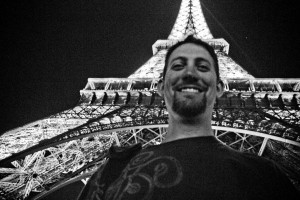
Sojourn's 6'6" inch Pastor Daniel Wainright doesn't look so tall next to the Eiffel Tower, on this European mission trip
Bobby: What advice would you give to someone wanting to start a photography ministry at their church, particularly if there aren’t any pro/experienced photographers in the congregation?
Chuck: As with anything, begin by praying over it and continue to pray over it as it gets going, keeping in mind that we don’t do this to bring glory to ourselves or our own skills. Also never forget that there is Grace in all things. It’s especially true when starting a new ministry like this. There will be difficult times and projects that don’t go as planned.
It’s a good idea to get a solid foundation and build up your own skills so you can help bring up other photographers who may have the passion but not the skill level yet. There are tons of free or low cost ways to help you learn and hone your skills on the internet. Get the basics down and understand how light works and you’ll be prepared for most situations you’ll encounter. Learn your camera and learn your church layout and lighting. Then shoot any chance you get .
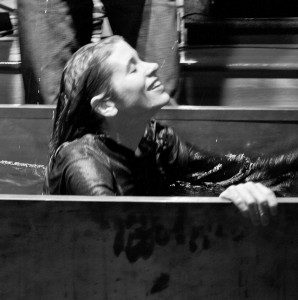
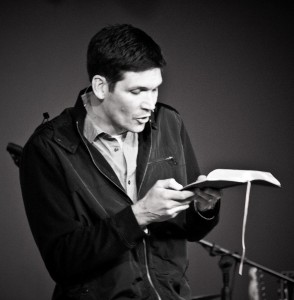
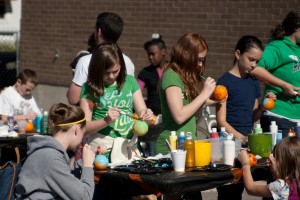

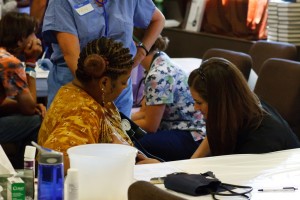
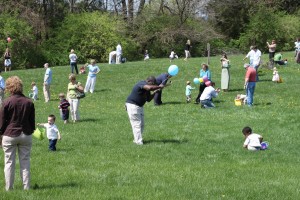
{ 2 comments }
This is a great ministry! I hope you reach and change many more lives. When did you start this?
Thanks Sydney! We’ve always had great photographers who would occasionally capture church events on camera but we officially started the ministry in 2007, then stepped it up quite a bit in 2010, in terms of adding and coordinating volunteers.
{ 4 trackbacks }